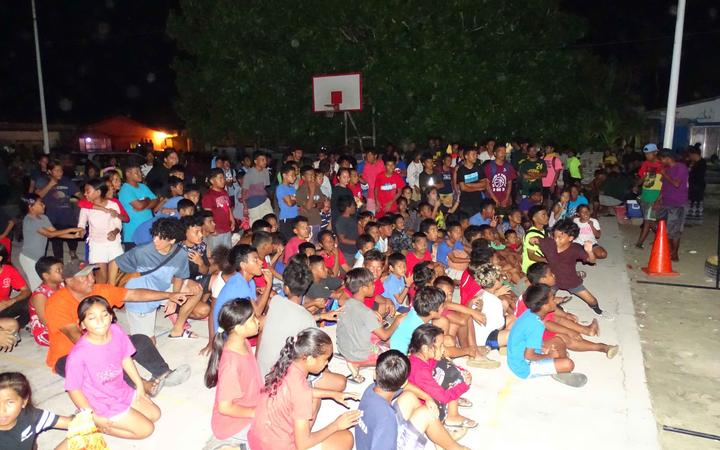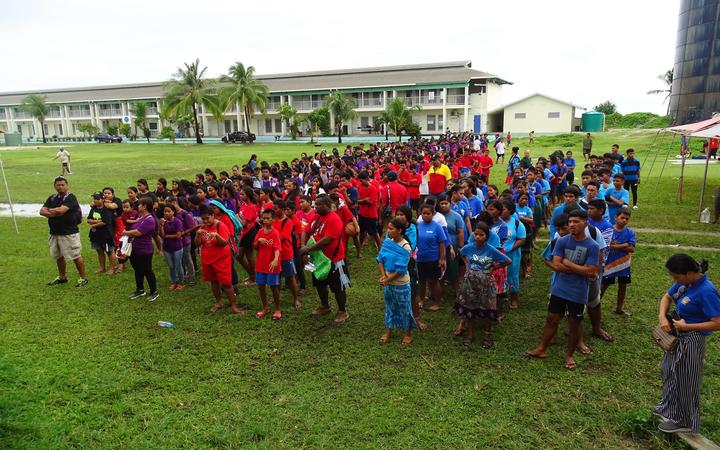Marshall Islands census numbers show heavy out-migration
Friday 26 November 2021 | Written by RNZ | Published in Marshall Islands, Regional

Marshall Islands. Photo Supplied
Preliminary results of the Marshall Islands national census are startling. Instead of expected modest growth, the Marshall Islands has seen a 26 percent drop in its population.
The 2011 census showed there were 53,158 people in the country. The preliminary 2021 data shows this number has declined to 39,262.
"One major contributing factor is the migration rate," said Economic Policy, Planning and Statistics Office Director Frederick deBrum, whose office managed this year's national census.
Marshall Islanders have visa-free access to the US through the Compact of Free Association treaty with the United States.
The Marshall Islands census shows that not only have the number of people living on the outer islands gone down, as expected based on the census 10 years ago, but also both Majuro and Ebeye's populations have declined significantly as well, a dramatic reversal after seven decades of growth since shortly after World War II.

In the 2011 census, 18 of the 24 inhabited atolls and islands saw their populations drop. Only the urban centers of Majuro and Ebeye and four remote islands went up. But this year's census shows that every island and atoll declined in population.
Census tabulators have completed surveying every outer island, and have completed most of the households in Majuro and Ebeye, said deBrum.
Currently, EPPSO staff are following up to complete a few houses that were not done during the initial phase of the census in the August to October period. But, he said, the numbers "won't change much" because there are not many households still to count.
"It may come up to 40,000 or 41,000" once the few households still to be surveyed are added to the preliminary total, he added.
Analysis work on the census data is already underway with the help of the Secretariat of the Pacific Community and should be completed in the first half of 2022, he said.
The biggest percentage drop was noted at Lae Atoll, which had 348 people in 2011 but only 55 now, an 84 percent decline. Majuro's population decline from a high of 27,797 in 2011 to 20,483 in the current preliminary results.
In every census conducted since the start of the US administration of the Marshall Islands after World War II, the population has increased. The country's population remained static at about 10,000 in the 1920s and 1930s.

In the first US census, conducted in 1958, there were 13,928 Marshallese in the islands. This number increased to 18,925 in 1967, and again to 24,135 in 1973. The 1980 census showed similar growth to 30,873. Then the numbers jumped exponentially in the 1988 census to 43,380.
At that time, predictions were made of 80,000 to 90,000 people living in the Marshall Islands by the 2020s and the government promoted a major effort in family planning to slow its four percent annual birth rate.
The population continued to increase, with the 1999 census showing 50,840. It wasn't until 2011 that out-migration hit home in the census numbers, with a 12-year growth of only slightly over 2,000, to 53,158, the smallest increase seen since the census began in 1958.
What the latest census numbers mean is that in the 10 years between 2011 and 2021, the Marshall Islands "lost" 25,000 people to out-migration, which is over double the out-migration rate from 1999 to 2011.
The 25,000 is roughly calculated by taking into account the difference between the population in 2011, 53,158, and 39,000 from the 2021 census, and the average of 1,142 births annually over 2011-2020.

Public and private school enrollment has dropped by 17 percent since 2015, tending to confirm the large population decline since the last national census in 2011. Photo: Wilmer Joel
School enrollment and birth data also show a similar drop off over the past 10 years.
Live births were already falling from their peak of over 1,500 per year in the mid-2000s by 2010, when the ministry recorded 1,406 births in Majuro, Ebeye and the outer islands. This number has steadily declined since then to a 20-year low of 980 births in 2019. The 1,002 births recorded by the Ministry of Health and Human Services in 2020 is a 30 percent drop from the 1,406 born in 2010.
Meanwhile, school enrollment is also down substantially from the pre-2010 period. School enrollment data compiled by the Ministry of Education shows that from slightly over 15,000 students enrolled in Marshall Islands schools in 2010, the numbers increased slightly up to 2015 when 15,942 were enrolled. Since 2015, the number of school children declined by 17 percent through 2021, when 13,274 students were enrolled.
A wildcard in conducting the census in late 2021 is the fact that the Marshall Islands border has been closed for 18 months. Since October 2020, only 10 government-sponsored repatriation groups returned by the time the census started in late August - a total of around 600 people returning. During this time, it is likely that over 3,000 Marshallese left the country on regular flights to the US, resulting in a large net outflow of the population.














































